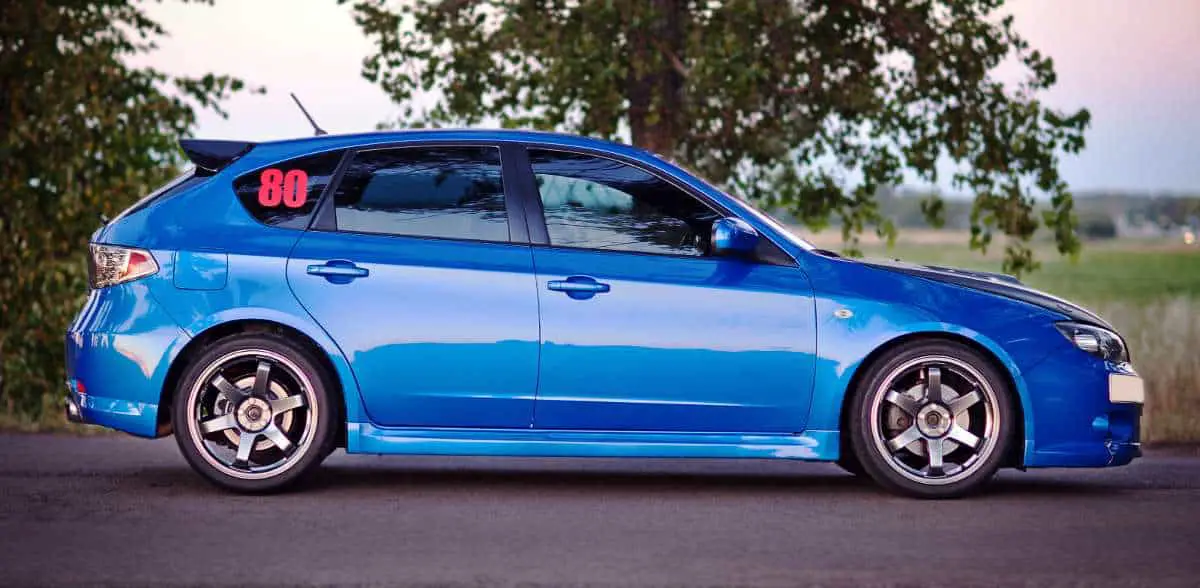The partial zero-emission vehicle (PZEV) is a little known breed of gasoline powered car that produces almost no air pollution.
Perhaps the automaker most associated with PZEV cars is Subaru.

Key Takeaways
- Subaru offers Partial Zero Emission Vehicles (PZEV), which are automobiles that meet or exceed strict emission standards, making them highly eco-friendly options.
- PZEV technology significantly reduces harmful emissions and produces zero evaporative emissions, contributing to cleaner air quality and improved environmental sustainability.
- Subaru’s PZEV vehicles achieve emission levels almost 90% cleaner than an average gasoline – powered car, demonstrating the brand’s commitment to reducing harmful emissions and exceeding regulatory requirements.
- PZEV engines utilize advanced technology and modifications, such as optimized engine components, efficient fuel delivery systems, dual-filtration air intake systems, and catalytic converters to achieve near-zero emission levels while maintaining performance and efficiency.
- A PZEV car is powered by an internal combustion engine, therefore it still emits greenhouse gasses.
What is a Partial Zero Emission Vehicle (PZEV)?
A Partial Zero Emission Vehicle (PZEV) is an automobile that meets or exceeds strict emission standards, making it a highly eco-friendly option for drivers concerned about reducing their environmental impact.
Definition and explanation
A Partial Zero-Emission Vehicle, or PZEV, is a vehicle that uses conventional fuel but produces very low emissions.
The label “PZEV” tells us that the car meets strict emission standards set by California’s Zero Emission Vehicle program and other entities like it across the U.S.
PZEVs are designed to minimize their impact on air quality through technological innovation, such as enhanced exhaust treatment systems and improved engine calibrations.
Subaru vehicles bearing this designation have made significant strides in reducing harmful emissions compared to traditional models.
These vehicles produce zero evaporative emissions from their fuel systems, meaning they don’t release any of the gas additives into the atmosphere that contribute to smog formation and environmental pollution.
Simply put, opting for a Subaru PZEV means one contributes less harm to our atmosphere while enjoying the reliable performance and affordability synonymous with Subaru brand.

Strict emission standards
Partial Zero Emission Vehicle (PZEV) standards signify some of the most stringent environmental regulations in the automotive industry. Subaru PZEV vehicles, for instance, comply with these exacting norms, demonstrating an unwavering commitment to reducing harmful emissions.
By adhering to these hard-line rules, which are significantly stricter than federal measures and even California’s Low Emission Vehicle program (LEV), PZEV certified Subarus achieve a Super Ultra-Low Emissions Vehicle (SULEV) tailpipe standard coupled with zero evaporative emissions.
Importantly, it’s not just about meeting these regulatory requirements because Subaru models are crafted meticulously to exceed them.
The brand’s dedication is clear in its advanced engineering methods that produce vehicles capable of reaching emission levels almost 90% cleaner than an average gasoline-powered car.
Advantages of Subaru’s PZEV Technology
Subaru’s PZEV technology offers several key advantages that make it a greener and more eco-friendly option for drivers.
Firstly, PZEV vehicles significantly reduce smog-forming emissions, helping to improve air quality in communities and reducing the impact on the environment.
Secondly, these vehicles meet strict emission standards, ensuring that they have lower overall emissions compared to traditional vehicles.
Thirdly, Subaru PZEV models run on regular unleaded fuel, making them both accessible and cost-effective for consumers.
Additionally, PZEV technology provides equal performance to non-PZEV vehicles, so drivers don’t have to compromise on power or driving experience.
Lastly, with zero evaporative emissions and a 15-year warranty on emissions-control parts offered by Subaru, owning a PZEV vehicle gives buyers peace of mind while minimizing their carbon footprint.

How PZEV engines work
PZEV engines reduce emissions through advanced technology and modifications. Here’s how they work:
- Subaru modifies the engine, fuel system, and catalytic converter to optimize efficiency and minimize emissions.
- The engine is designed with high – performance components for optimal combustion and reduced emissions.
- The fuel system is carefully calibrated for efficient fuel delivery, resulting in cleaner combustion and lower emissions.
- PZEV engines use a dual – filtration air intake system to trap harmful particles and pollutants before they enter the engine.
- The catalytic converter plays a crucial role in reducing harmful exhaust gases. It contains precious metals that act as catalysts to convert harmful compounds into less harmful substances.
- PZEV vehicles undergo stringent testing to ensure compliance with the Super Ultra Low Emissions Vehicle (SULEV) tailpipe standard and zero evaporative emissions.
- Subaru’s PZEV technology ensures that emission control parts are covered under warranty for 15 years (or 150,000 miles), giving peace of mind to owners.
Dual-filtration air intake system
Subaru’s PZEV (Partial Zero Emission Vehicle) Technology incorporates a highly effective feature known as the Dual-filtration air intake system. This innovative system plays a pivotal role in reducing emissions and promoting cleaner air quality.
Unlike conventional vehicles, where unburned gas fumes can escape through the engine’s air intake after shutting off, Subaru’s Dual-filtration air intake system prevents these harmful emissions from being released into the environment.
By utilizing carbon air intake filters and a charcoal canister, this filtering mechanism absorbs and traps unburned fuel vapors, ensuring that only clean air enters the engine.
The result is improved engine performance while minimizing pollution and contributing to Subaru’s commitment to sustainability and environmental responsibility.
Subaru Models with PZEV Designation
Subaru offers a wide range of models equipped with the PZEV designation, providing eco-conscious drivers with an array of environmentally friendly options.
Subaru vehicles equipped with PZEV engines
List of Subaru models with PZEV designation:
| Model | Year | |
|---|---|---|
| Subaru Impreza |  | 2012-2022 |
| Subaru Forester |  | 2011-2022 |
| Subaru Outback |  | 2013-2022 |
Benefits of owning a Subaru PZEV model
Owning a Subaru PZEV model comes with numerous benefits that make it an attractive choice for environmentally conscious car buyers.
- One of the immediate advantages is the reduction in smog, thanks to Subaru’s innovative PZEV technology.
- These vehicles produce zero evaporative emissions, contributing to cleaner air quality and a healthier environment.
- Additionally, Subaru PZEV models offer lower maintenance costs due to having a more durable design.
- No smog checks required in some states, making ownership hassle-free.
- Furthermore, these eco-friendly vehicles have better resale value compared to non-PZEV models.
- With a 15-year warranty on emission-control parts, owners also enjoy added peace of mind knowing that their investment is protected.
When it comes to safety features and reliability – qualities synonymous with the Subaru brand – PZEV models are no exception, ensuring a secure driving experience for you and your loved ones.
Cons of Owning a Subaru PZEV Model
- More expensive due to the additional emissions control equipment.
- Slightly lower fuel consumption performance because the extra emissions control system means that the engine has to work a little harder.

Subaru’s Vision for Future Eco-friendly Vehicles
Subaru is committed to sustainability and reducing environmental impact through the development of new eco-friendly technologies, paving the way towards a greener automotive industry.
Commitment to sustainability and environmental impact reduction
Subaru is deeply committed to sustainability and reducing its environmental impact. As the first zero-landfill automaker in America, Subaru takes pride in its environmentally conscious practices.
The company supports various environmental initiatives in collaboration with organizations such as the National Park Foundation and TerraCycle.
From minimizing waste in vehicle production to developing greener technologies, Subaru strives to be at the forefront of eco-friendly automotive manufacturing.
By meeting stringent Partial Zero Emissions Vehicle (PZEV) standards, Subaru enables drivers to make a positive difference by reducing their carbon footprint.
This commitment extends beyond their vehicles, as Subaru actively engages in corporate and social responsibility efforts focused on sustainability.
Research and development of new eco-friendly technologies
Subaru is at the forefront of automotive innovation, continuously investing in research and development to create new eco-friendly technologies.
As part of their commitment to sustainability, they are dedicated to developing vehicles that have a reduced impact on the environment.
Their focus is not only on improving existing technologies but also on discovering innovative solutions for future eco-friendly vehicles.
To this end they have begun manufacturing and selling hybrid cars, as well as a fully electric model, the Solterra.
By staying ahead of the curve with their ongoing R&D efforts, Subaru is positioning themselves as leaders in greener transportation options, paving the way for a more sustainable automotive industry.

Pioneering the way towards a greener automotive industry
By investing in research and development of innovative technologies, Subaru is continuously striving to reduce emissions, improve fuel efficiency, and design new eco-friendly vehicles.
Subaru’s dedication to the environment goes beyond just building green cars; they also partner with organizations like the National Park Foundation and TerraCycle to support initiatives that protect our planet.
As the first zero-landfill automaker in the United States, Subaru sets an example for others in the industry by prioritizing waste reduction and eco-conscious practices throughout their manufacturing processes.
Subaru’s efforts in pioneering a greener automotive industry are not just lip service – they have tangible results that demonstrate their commitment to reducing emissions and preserving our planet.
Their Partial Zero Emission Vehicle (PZEV) designation showcases their dedication to meeting strict emission standards while still delivering reliable performance.
Conclusion
In conclusion, Subaru’s Partial Zero Emission Vehicle (PZEV) technology showcases their commitment to sustainability and reducing environmental impact.
With strict air pollution emission standards met or exceeded, PZEV vehicles offer a compelling alternative that combines affordability with eco-friendliness.
Subaru’s vision for future eco-friendly vehicles continues to drive their research and development efforts, pioneering the way towards a greener automotive industry.
FAQs
How does a Partial Zero Emission Vehicle Subaru reduce emissions?
A PZEV Subaru reduces emissions through advanced technologies such as improved engine efficiency, enhanced exhaust systems, and the use of cleaner fuels. These measures help minimize the release of pollutants into the environment.
Are there any benefits to owning a Partial Zero Emission Vehicle Subaru?
Yes, there are several benefits to owning a PZEV Subaru. These include reduced environmental impact, potential eligibility for certain government incentives or tax credits, and contributing towards improving air quality in your community.
Can I fuel my Partial Zero Emission Vehicle Subaru at any gas station?
Yes, you can fuel your PZEV Subaru at any regular gas station as it uses gasoline like traditional vehicles. However, it’s important to note that PZEV Subarus also have an electric component that provides additional energy efficiency and reduces emissions even further when driving under certain conditions.
- Tesla Charger Installation Cost (Home Setups) - March 1, 2024
- Tesla Phone Key Disconnected (Troubleshooting Guide and Quick Fixes) - March 1, 2024
- Tesla FSD 12 (Explained) - March 1, 2024